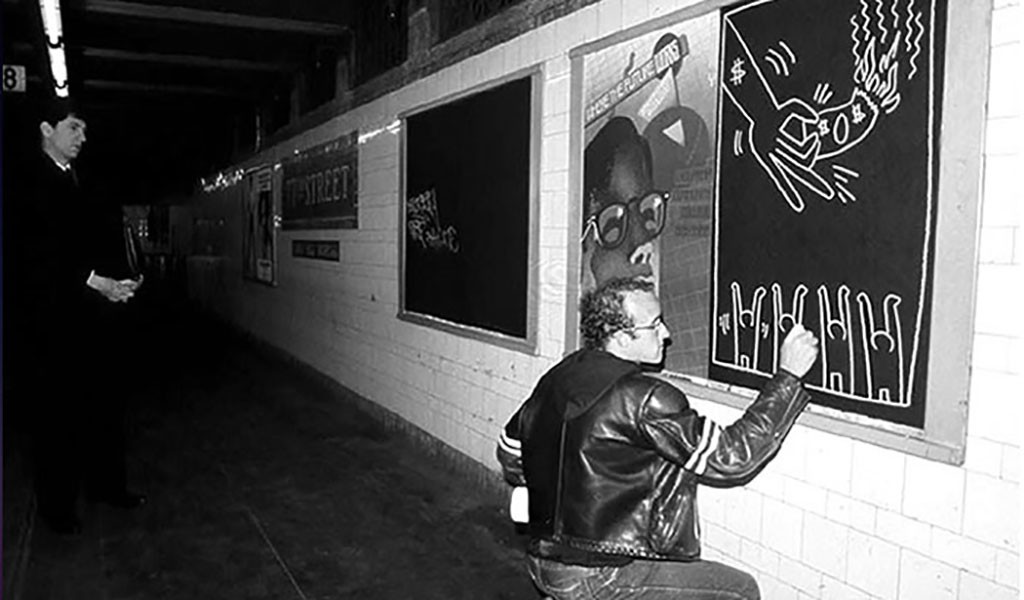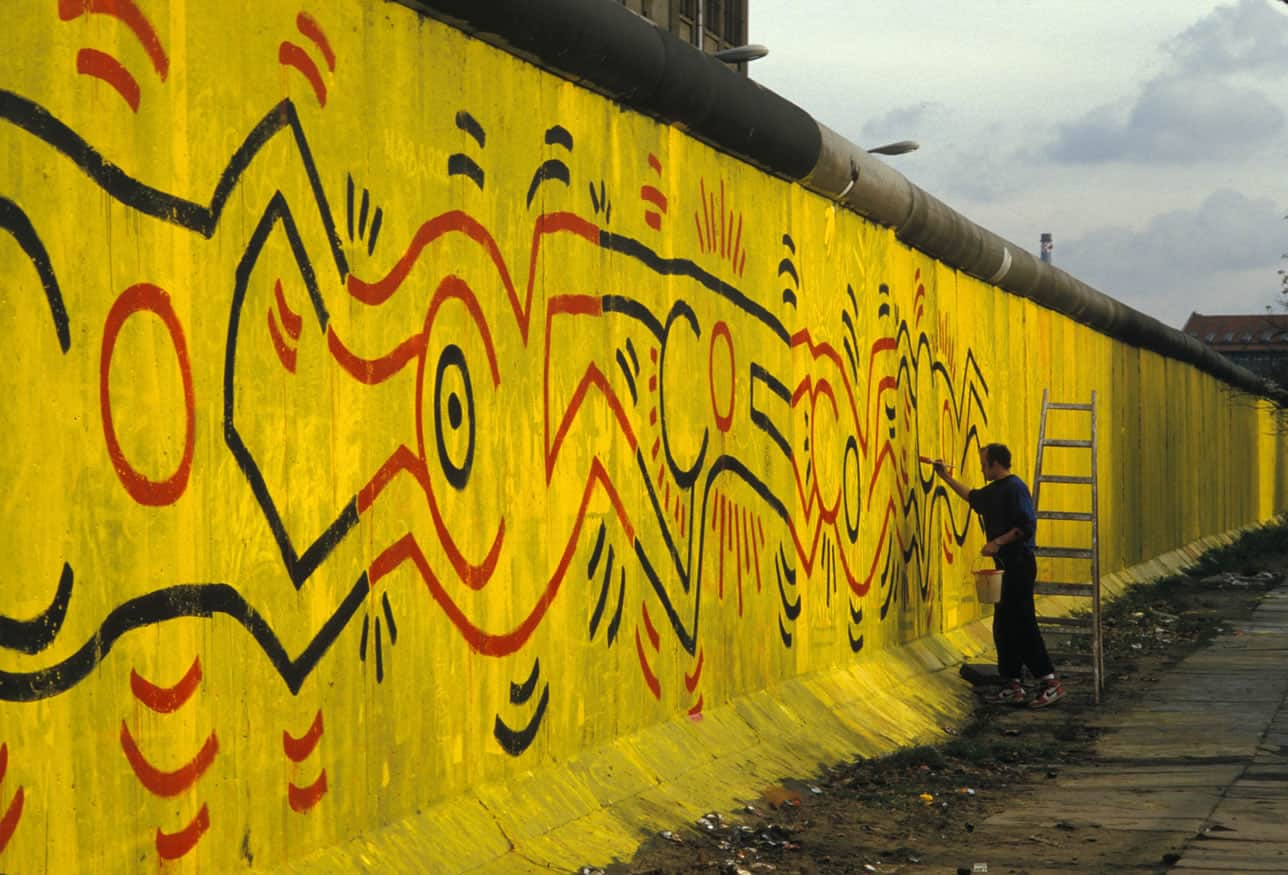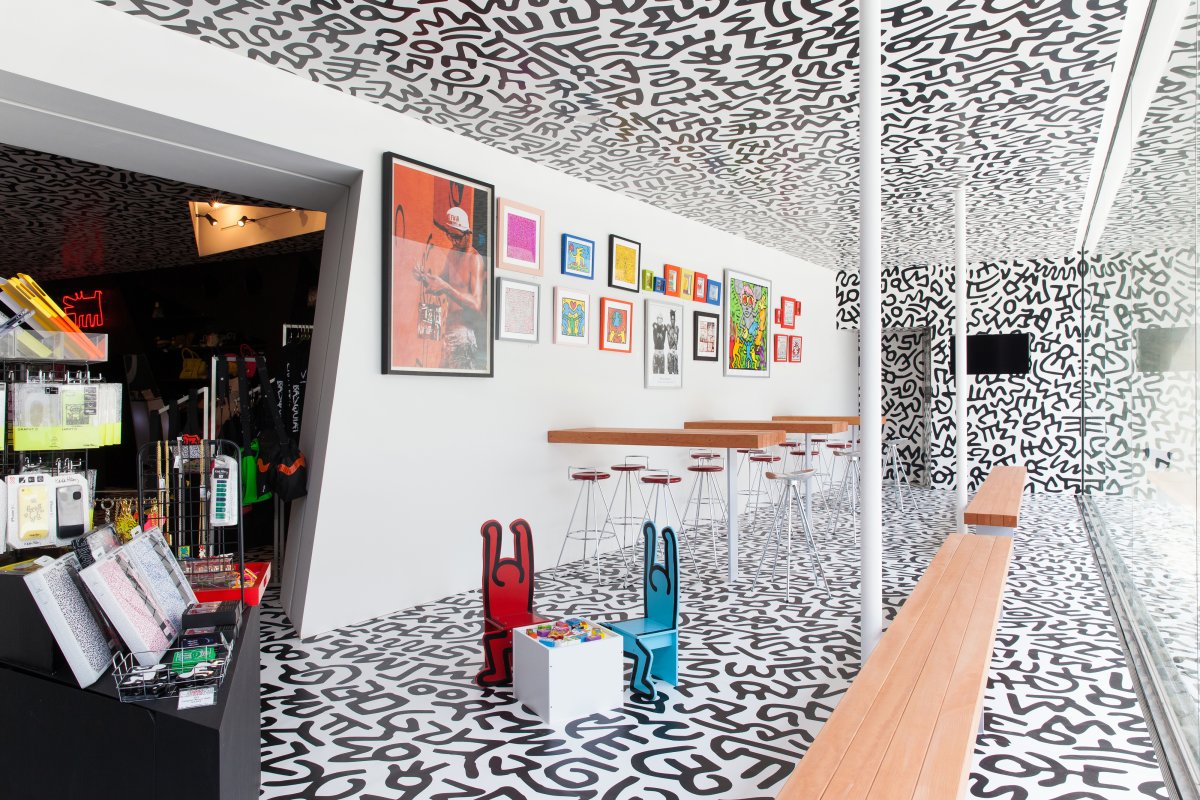Pioneer. Activist. Influencer. Artist. To many people Keith Haring was many things and his multi-facted life, and approach to it, had a great impact on both the artworld and the society in which he worked. Haring made serious movements as a social and political activist who used his fame and reach to address important causes of the day and via his self-created platform of art he was able to introduce both his works and different ways of thinking to as many people as possible. In today’s blog we look at how Haring impacted not only the society of the day but how his legacy continues to inspire artists across the globe.
Keith Haring’s output from the underground subways of New York to walls and cities across the world condensed a lifetime of creation into a sadly short career. Throughout his public and studio works, Haring would use his art to raise awareness for causes dear to his heart and devoted much time to creating public art that often carried social messages and many of which were created for charities, hospitals, children’s day care centres and orphanages.
Crack is Wack
The now famous Crack is Wack mural of 1986 has become a landmark along New York’s FDR Drive. Other projects include; a mural created for the 100th anniversary of the Statue of Liberty in 1986, on which Haring worked with 900 children; a mural on the exterior of Necker Children’s Hospital in Paris, France in 1987; and a mural painted on the western side of the Berlin Wall three years before its fall. Haring also held drawing workshops for children in schools and museums in New York, Amsterdam, London, Tokyo and Bordeaux, and produced imagery for many literacy programs and other public service campaigns.
Born out of the birthplace of hip hop, Haring brought a youthful power to his works and used his platforms in a positive way to shine a light on important causes that affected, and sadly still affect, society.
He changed the path from the Underground to the art market
Whilst Haring had been fascinated by art since childhood, his path to recognition was unconventional and has since paved the way for many of the world’s most well-known street artists. Inspired by hearing lectures by other artists at the Pittsburgh Arts and Crafts Center (whilst working as a maintenance worker) he was influenced by artists such as Christo who drew his attention to public works. Using his trademark line-based style, Haring became instantly recognisable for his pop style art. This would catapult him from the underground art scene in New York City where Haring would use the subway as his testbed for ideas and recognition. Between 1980 and 1985 he created hundreds of his “Subway Drawings” by using white chalk to draw on unused advertising panels. Almost as quickly as they went up they were ripped down by many an admiring commuter who would often gather to watch Haring at work.
“The subway pictures became a media thing, and the images started going out into the rest of the world via magazines and television,” shared Haring. “I became associated with New York and the hip-hop scene, which was all about graffiti and rap music and break dancing. It had existed for five years or more, but it hadn’t really started to cross over into the general population. It was incredibly interesting to me that it was reaching all kinds of people in different levels from different backgrounds.”

He gained commercial success without compromising vision or artistry
Haring was one of the first pioneers that crossed street recognition with mainstream acceptance and success. Haring’s first exhibition was held at the Tony Shafrazi Gallery, which was known for working with both established and upcoming talent and shortly after exploding onto the seen he would begin to work internationally. From 1982, he would create more than 50 pieces of public art in different countries around the world. Australia, Brazil, Italy, and the Netherlands all hosted his work. He was even asked to paint a mural on the Berlin Wall. In addition to public art, Haring used his iconic style to create set designs, stage decorations, and album covers—often for charitable causes.

AIDS
From the start Haring used his art to discuss topics of social and political importance. In particular, his work often deals with themes of homosexuality and AIDS. AIDS advocacy was of particular importance to the artist, as he himself was diagnosed in 1988. Other themes that Haring explored included apartheid and the growing crack epidemic in New York. In fact, his infamous Crack is Whack mural on New York’s FDR Drive tackles this topic.
Whilst the mixing of art and social or political causes was not new, Haring took this idea and made it central to many of his works and style. Especially in the world of graffiti at the time where tagging was much more common, Haring removed the ego by focusing on his unique line drawing style and raising awareness.

Haring made his work commercially available to as many people as possible
Many artists today, Banksy Shepherd Fairey, commercialise their works through pop-up shops, limited runs and exciting, underground releases. Haring took the idea of making his art as accessible to as many people as possible and, coupled with his interest in commercialising his works, he opened his Pop Shop in 1986 which transformed the concept of accessibly to commercially produced art.
“Other artists had been accusing me of selling out since my paintings started selling,” he told Rolling Stone in 1989. “I mean, I don’t know what they intended me to do: Just stay in the subway the rest of my life? Somehow that would have made me stay pure? By 1984 the subway thing started to backfire, because everyone was stealing the pieces. I’d go down and draw in the subway, and two hours later every piece would be gone. They were turning up for sale.”
For Haring, the Pop Shop was an egalitarian way to make his work accessible to all and mimicked his desire to not be pulled into the faux world of galleries or contemporary art and followed a long line who worked on both commercial and fine art projects.

His legacy continues
Despite a brief career that spanned just over 10 years, Haring’s legacy lives on. His career path embracing of both the mainstream and the underground, inspired other urban artists that it was possible to balance artistry, political activism, and charity without sacrificing success.
For more information on our Keith Haring original artworks or Keith Haring prints for sale, contact Andipa via sales@andipa.com or call +44 (0)20 7589 2371.
